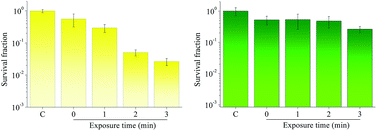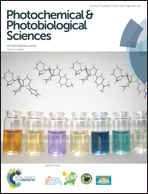Effects of ionic strength on the antimicrobial photodynamic efficiency of methylene blue
Abstract
Antimicrobial photodynamic therapy (APDT) may become a useful clinical tool to treat microbial infections, and methylene blue (MB) is a well-known photosensitizer constantly employed in APDT studies, and although MB presents good efficiency in antimicrobial studies, some of the MB photochemical characteristics still have to be evaluated in terms of APDT. This work aimed to evaluate the role of MB solvent's ionic strength regarding dimerization, photochemistry, and photodynamic antimicrobial efficiency. Microbiological survival fraction assays on Escherichia coli were employed to verify the solution's influence on MB antimicrobial activity. MB was evaluated in deionized water and 0.9% saline solution through optical absorption spectroscopy; the solutions were also analysed via dissolved oxygen availability and reactive oxygen species (ROS) production. Our results show that bacterial reduction was increased in deionized water. Also we demonstrated that saline solution presents less oxygen availability than water, the dimer/monomer ratio for MB in saline is smaller than in water and MB presented a higher production of ROS in water than in 0.9% saline. Together, our results indicate the importance of the ionic strength in the photodynamic effectiveness and point out that this variable must be taken into account to design antimicrobial studies and to evaluate similar studies that might present conflicting results.


 Please wait while we load your content...
Please wait while we load your content...